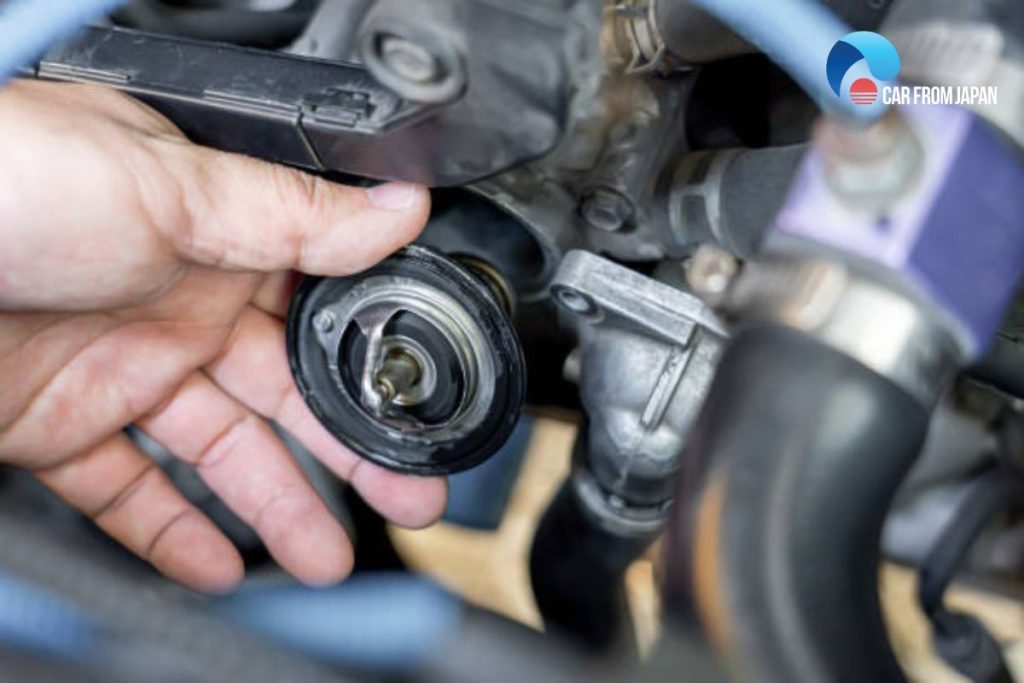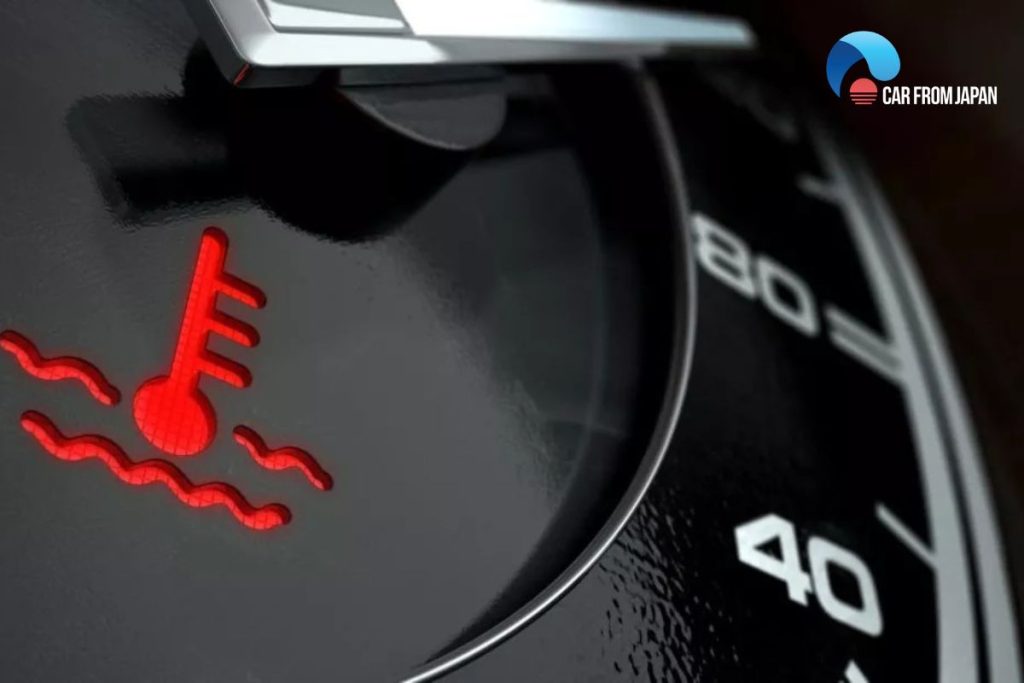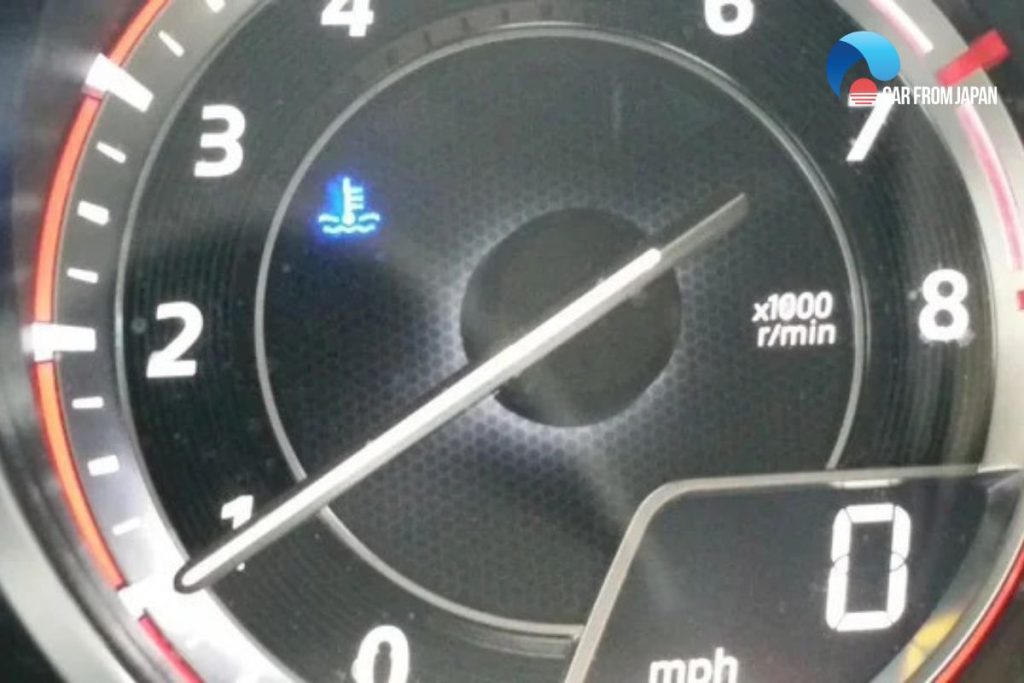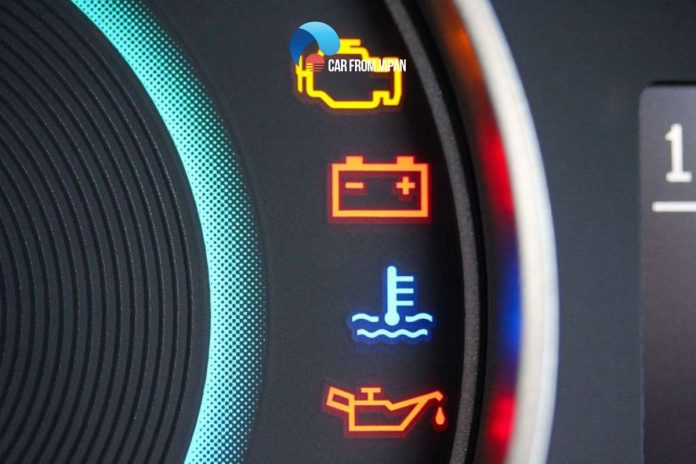Have you ever glanced at your dashboard and spotted a blue coolant light comes on when car starts? Don’t panic!
This isn’t necessarily a sign of impending doom for your vehicle. That blue light is most likely your car’s coolant temperature warning light, and its initial illumination is actually a good thing.
Let’s get into the world of car coolant and understand what that blue light signifies. We’ll explore why it comes on when you start your engine and what it means for your car’s overall health.
Contents
- Understanding The Coolant System
- The Role of The Coolant Light On Car
- Why Blue Coolant Light Comes On When Car Starts Is Normal?
- When Will Blue Coolant Light Comes On When Car Starts Is A Warning?
- FAQs on Blue Coolant Light When Car Starts
- Why does the blue coolant light stay on longer in winter?
- Can driving with the blue coolant light on damage my engine?
- Why does the blue coolant light sometimes turn on briefly even when the engine is warm?
- Is it normal for the blue coolant light to come on after the car has been parked for a short period?
- Will the blue coolant light come on if my thermostat is stuck open?
- Can a coolant system flush affect the blue coolant light?
- Final Words
Understanding The Coolant System
Your car’s engine generates immense heat during operation. To prevent overheating and potential damage, a vital system called the cooling system circulates a special liquid mixture throughout the engine.
This coolant absorbs heat, carrying it away from the engine block to the radiator, where it’s released into the air.
The Role of The Coolant Light On Car
The blue light on your dashboard acts as a coolant temperature gauge. When you start your engine, it’s cold, and the coolant hasn’t had a chance to circulate and reach its optimal operating temperature.
That’s why the blue light illuminates, it simply informs you that the engine coolant is currently below its ideal temperature.
Why Blue Coolant Light Comes On When Car Starts Is Normal?
This initial blue light signifies a positive aspect. The car’s computer system performs a health check, verifying that the coolant temperature sensor is functioning correctly and ready to monitor the engine’s temperature throughout your drive.
This ensures the system can effectively manage engine temperature once it reaches its optimal range.
When Will Blue Coolant Light Comes On When Car Starts Is A Warning?
While the blue light at startup is normal, other situations warrant closer attention. Here are some issues for you to notice as you may ignore them!
Lingering Blue Light
The blue coolant light serves as a guardian for your engine’s temperature.
While its initial illumination at startup is normal, a blue coolant light comes on when car starts staying on for an extended period (usually exceeding a few minutes) after you start driving indicates a potential problem: the engine isn’t reaching its ideal operating temperature.
Malfunctioning Thermostat

The thermostat plays a critical role in regulating coolant flow to the engine. Imagine it as a valve that opens and closes based on engine temperature.
When the engine is cold, the thermostat remains closed, restricting coolant flow and allowing the engine to warm up faster.
As the engine reaches its optimal temperature, the thermostat opens gradually, allowing hot coolant to circulate and regulate the engine’s temperature.
However, if the thermostat malfunctions and gets stuck open, it acts like a faulty gatekeeper. Coolant continuously flows through the engine, regardless of its temperature.
The constant circulation of cool coolant prevents the engine from reaching its ideal operating temperature range, triggering the blue light to stay on.
Low Coolant Level
Coolant absorbs heat and carries it away to the radiator for dissipation. But just like any superhero, coolant needs to be present in sufficient quantities to be effective.
When the coolant level in the system drops below the recommended level due to leaks or neglect in regular maintenance, the remaining coolant has a tougher job.
It’s simply not enough to absorb and transfer all the heat generated by the engine efficiently.
This issue can lead to the engine not reaching its optimal operating temperature and the blue coolant light comes on when the car starts illuminated as a warning sign.
Faulty Coolant Circulation System
Think of the coolant circulation system as a network of highways within your car. The water pump acts like a powerful pump, pushing coolant through this network of hoses and pipes.
The radiator functions as the heat exchanger, where hot coolant releases its captured heat into the air.
If any component within this system malfunctions, it can disrupt the smooth flow of coolant. A failing water pump might not be strong enough to circulate coolant effectively.
A clogged radiator can hinder the release of heat, causing the coolant to remain hot. Blocked hoses can restrict coolant flow in specific areas of the engine.
Any of these issues can prevent the engine from reaching its optimal operating temperature, causing the blue light to stay on as a warning.
Light Color Change or Flashing
The blue coolant light typically serves as a helpful prompt for engine temperature. However, some car models take a more dramatic approach.
In these vehicles, the red coolant light comes on when the car starts or the blue light may change color or start flashing when coolant temperature reaches excessively high levels. And it’s a critical warning that your engine is overheating.

Engine Overheating
Imagine your car engine as an athlete. Just like an athlete, the engine generates a lot of heat during operation.
The coolant system acts as a cooling mechanism, constantly circulating coolant to absorb this heat and transfer it away from the engine.
However, if the engine overheating warning light comes on, it signifies a breakdown in this cooling process. The coolant temperature has risen to a dangerously high level, and the engine is at risk of serious damages.
Engine overheating is a serious threat because the extreme heat can warp metal components, causing internal friction and reducing efficiency.
In the worst-case scenario, pistons can seize or the head gasket can blow, leading to catastrophic engine damage and expensive repairs.
If you see a flashing red coolant light, prioritize safety by pulling over immediately and turning off the engine.
- Don’t ignore the red or blue coolant light comes on when car starts. Find a safe location to pull over as soon as possible and turn off the engine.
- Then, turn off all electrical accessories. This act will help to minimize the load on the engine and prevent further heat generation.
- Don’t attempt to open the radiator cap while the engine is hot. The coolant system is pressurized, and opening a hot radiator can lead to scalding injuries.
- Wait for the engine to cool down completely (ideally for at least 30 minutes) before attempting to check the coolant level.
- Once the engine has cooled down, you can check the coolant level. If the level is low, adding coolant might be a temporary solution to get you to a mechanic.
The overheating issue needs professional attention. A qualified mechanic can diagnose the underlying cause of the overheating, whether it’s a faulty thermostat, a failing water pump, a clogged radiator, or another issue.
Impact of Weather
Extremely cold weather can cause the blue light to stay on for a longer duration after starting. This is because the engine takes moretime to reach its operating temperature in such conditions.
However, if the light stays on for an unreasonable amount of time even in cold weather, it’s best to consult a mechanic for a checkup.
Driving Habits and the Blue Light
Short trips often don’t allow the engine to reach its optimal temperature fully. If your driving habits predominantly consist of short trips, you might see the blue light on more frequently.
Driving shouldn’t be a major concern unless the blue coolant light comes on when car starts and stays flashing during longer drives.
However, you should always be careful and pay attention to your driving habits when being on the road to avoid all of the unexpectancy.

FAQs on Blue Coolant Light When Car Starts
Why does the blue coolant light stay on longer in winter?
In colder weather, it takes longer for the engine to reach its optimal operating temperature.
The blue coolant light may stay on longer during winter months because the coolant is colder and takes more time to warm up.
Can driving with the blue coolant light on damage my engine?
Driving with the blue coolant light on is generally safe, as it simply means the engine is still warming up.
However, driving aggressively or at high speeds before the engine is warm can increase wear and tear.
It’s best to drive gently until the light turns off!
Why does the blue coolant light sometimes turn on briefly even when the engine is warm?
This can happen if the engine experiences a sudden drop in temperature, such as after driving through water or if the coolant level is low.
It might also indicate a sensor issue, requiring a check by a mechanic.
Is it normal for the blue coolant light to come on after the car has been parked for a short period?
It can be normal. If the car is parked and the engine cools down, especially in colder weather, the blue coolant light may come on when you restart the car until it warms up again.
Will the blue coolant light come on if my thermostat is stuck open?
If the thermostat is stuck open, the engine may not reach its optimal operating temperature efficiently, causing the blue coolant light to stay on longer or intermittently turn on.
Can a coolant system flush affect the blue coolant light?
After a coolant system flush, if the coolant level is not properly filled or if there are air bubbles in the system, the blue coolant light might behave unusually.
Ensure the system is properly bled and filled after a flush to avoid this issue!
Check out this video from Nate Wade Subaru to learn the blue light mean on your dashboard!
Final Words
The blue coolant light serves as a valuable tool to monitor your car’s engine temperature. While its initial appearance at startup is a normal occurrence, pay close attention to how long it stays on and if it changes color to red.
By understanding this light and its function, you can ensure your engine operates at its optimal temperature, maximizing performance and preventing overheating issues.
If you encounter any abnormal blue coolant light comes on when car starts, don’t hesitate to consult a qualified mechanic for further diagnosis and repair to keep your car running smoothly.



